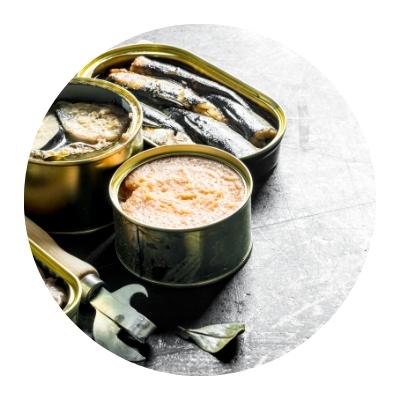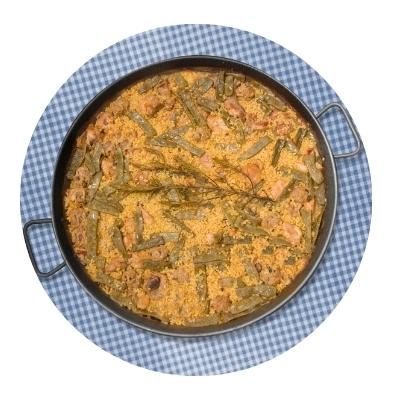Portuguese Canned Fish Guide

The practice of preserving food is not new; preserving ingredients by dehydration, fermentation or salting are ancient methods. In Portugal, salted cod is one of the best known examples of preserved foods, but Portuguese fish preserves are not far behind and play an important role in the country's history and culture.
Read on to find out a little more about these little delicacies from the sea that are slowly making their way to every corner of the world.
History of Portuguese preserves
Portugal has a long history of canning fish. Already in the Iron Age, the method of preserving fish in sea salt was used in the Iberian Peninsula, and was used by the Phoenicians, Greeks, Carthaginians and Romans.
Ruins found along the coast, such as the Roman clay pots found at Peniche, show evidence of a developed industry for salted fish during this time. Ancient writings also tell of fish being exported to Italy, Gaul and North Africa. Salted fish remained the preferred method of preservation for many centuries, but drying and smoking methods gradually became popular.
In the mid-19th century, in 1853 to be precise, the first fish preserving company was set up in Portugal. Years later, spurred on by the two great wars, Portugal greatly expanded its production, supplying the countries of Europe and their soldiers with an easily transportable, nutritious and durable foodstuff.
Since then, the Portuguese have been active in perfecting new canning techniques, making the product a national speciality. The convenience of canned fish left the theatre of war and made its way into the daily lives of Portuguese families.
In 1983, there were 152 canning factories in Portugal, producing some 34,000 tonnes per year, and it was one of the largest exporters of canned fish. However, shortly afterwards, in the late 1980s and throughout the 1990s, the canning industry suffered a terrible period of decline, with many factories and producers closing their doors and canned fish taking a back seat in the minds of the Portuguese.
The renaissance of Portuguese canned fish
After the crisis of the 1990s, the canning industry went from 152 to only 20 factories; however, they now produce more than 59,000 tonnes of fish per year. In addition to promoting the economic and health benefits of canned fish, several producers decided to return to traditional methods and packaging, recreating the colourful and tempting hand-wrapped labels that were popular in the iconic era of canned fish. With the explosion of high-end gourmet shops in Lisbon and Porto, many canned fish producers began to offer boutique brands of the highest quality fish using the revamped packaging.
As a result, canned fish is now fashionable. In many capitals, wine bars are opening where canned fish plays a leading role and gourmand from all over the world are looking for the best canned sardines, mackerel, tuna or cod.
Main canned fish and seafood in Portugal
Canned sardines, although the most well-known and traditional Portuguese canned fish, are not the only one. In Portugal, it is possible to find almost all canned seafood, options include squid, octopus and roe in a multitude of recipes and oils. The most common canned fish in Portugal are:
- Sardines: these are the most classic. Known as sardinhas or petingas (sardines). You can find them in olive oil, smoked, with tomato, lemon or pepper, among other ingredients.
- Sardine roe: also known as Portuguese caviar. They are preserved in olive oil and are usually served with buttered toast. A real delicacy.
- Octopus: usually found plain with just olive oil or already seasoned with garlic or tomato sauce. It is worth eating it straight from the can or cooking it Portuguese style, pouring its own sauce over the potatoes to cook it.
- Tuna: nothing like the tuna you can find in large supermarkets. In Portugal you can find high quality canned tuna cuts. Try the canned tuna belly, the juiciest part of the fish.
- Mackerel: good for everything. Known as cavalha or cavalinha (smaller mackerel). It is usually canned in fillets, similar to canned tuna but juicier and with a more intense flavour.
- Baby squid: this delicacy goes further, it is practically a dish inside the can, the calamari comes with a sauce based on tomato, onion, peppers and olive oil, there are also versions with olive oil only.
- Codfish: Portugal is not to be missed. It can be found in a wide variety of preparations. From the olive oil version to more elaborate recipes such as Portuguese-style cod with garlic and oil.
How are Portuguese canned fish produced?
The production of canned fish may vary from one cannery to another, but essentially consists of the following steps:
- Before starting production, a sensory quality analysis is carried out to evaluate the smell, texture and classify whether the fish is suitable for canning.
- Production starts with the fish in brine, the time will depend on the salinity of the water and the quality of the fish or shellfish.
- The parts that are not to be preserved are removed and the fish goes through a canning process. At this stage, sauces or oil are added until the can is completely filled, then the cans are hermetically sealed so that no air can enter.
- Finally, the cans are sealed and heated to over 100 degrees Celsius, this part of the process cooks the fish and sterilises the cans, allowing the product to be preserved without the addition of preservatives.
Portuguese fish preserves as gifts
With a vintage look and packaging that tells the story of the country, canned sardines have become an icon of Portuguese industrial design and a symbol of the country's gastronomic culture. And they make great souvenirs. Nowadays, you can find tins with fun prints, retro designs, dates and historical events.
In this way, Portuguese fish preserves have become one of the most purchased souvenir products by travellers visiting Portugal.
SHARE:





